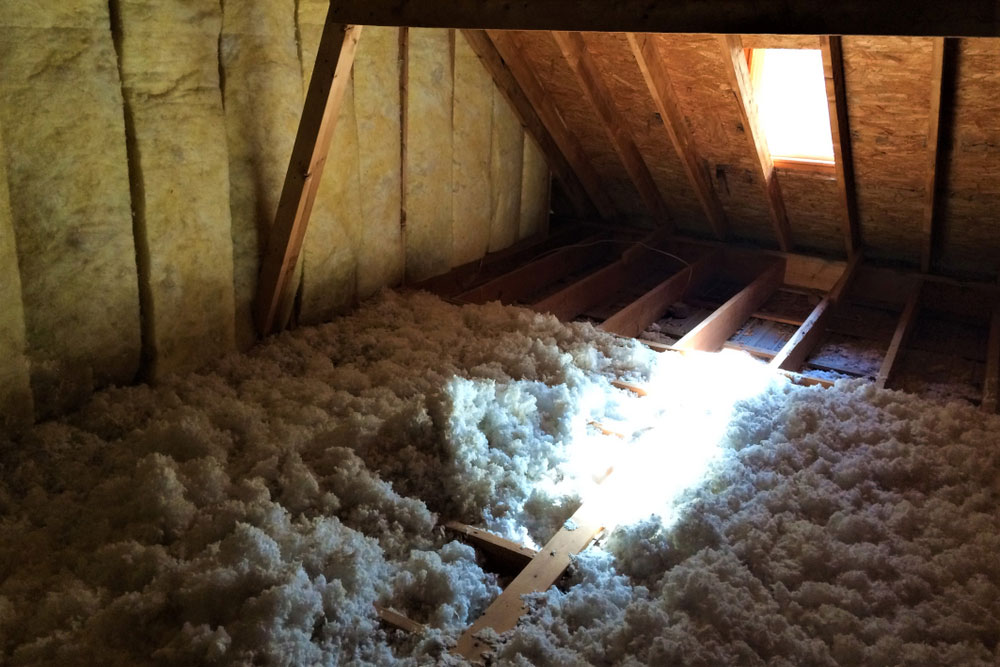Blown-In v.s. Batt Insulation – Which Is Better?

When choosing which insulation works best for your home, you’ll typically be left with a choice between batt insulation and blown-in insulation. But what do these terms even mean? And how do you choose between them?
Blown-in insulation is made of materials scattered along the floor, and batt insulation is stapled to roofs, walls, or floorboards. Batt insulation is typically made of fiberglass, while blown-in insulation can be made of fiberglass or cellulose. So which one is better for your home?
Blown-In Insulation Pros
Blown-in insulation is much better for irregular areas. Batt insulation must be carefully cut to cover every part of a surface, but blown-in insulation is blasted at the place it needs to be and naturally fills the space. This material is also often treated with pesticides, preventing possible rat problems down the road. It’s mold-resistant as well.
Blown-in insulation can also have a higher R-value, or heat resistance value. Blown-in fiberglass isn’t much different from batted fiberglass insulation, but blown-in cellulose is better at trapping heat than any fiberglass.
Blown-In Insulation Cons
There are a few downsides to choosing blown-in insulation over batt insulation. They tend to have chemical treatments on them that aren’t very eco-friendly. Cellulose insulation also can’t be recycled due to these treatments.
This insulation is much harder to install, meaning you have to hire a professional if you want this type. This makes it overall more expensive than batt insulation.
Fiberglass blown-in insulation also has a lower R-value than batt fiberglass, meaning it’s less effective.
Batt Insulation Pros
There are a few reasons why you’d want batt insulation over blown-in insulation. First and foremost, batt is generally much easier to deal with. You can buy it quickly and install the insulation yourself without much trouble.
Batt insulation is generally better for the environment, as the fiberglass is recycled and not covered in chemicals. And if you like fiberglass as a material, batted fiberglass has a higher R-value than blown-in fiberglass insulation.
Batt Insulation Cons
Batt insulation tends to have a higher mold risk than cellulose. You need to make sure that your fiberglass insulation never gets wet.
While it has a higher R-value than blown-in fiberglass insulation, it has a lower R-value than cellulose insulation. If you need something powerful, blown-in is better.
It’s tricky to get batt insulation to fit into weird corners. You need to cut it carefully so that it fits properly on every surface, or else you’ll have gaps in your insulation.
How to choose between the two
Quickly assess your situation to determine which type of insulation is best for you. Do you have an insulated attic with corners that are hard to fill? Do you plan on doing it yourself, or will you not risk it and hire an insulation professional? What does your budget look like? What kind of insulation and labor can you afford?
You should also ask yourself how you feel about the environmental impact of your insulation. Do you not care about chemical treatments, or would you prefer not to have any?
